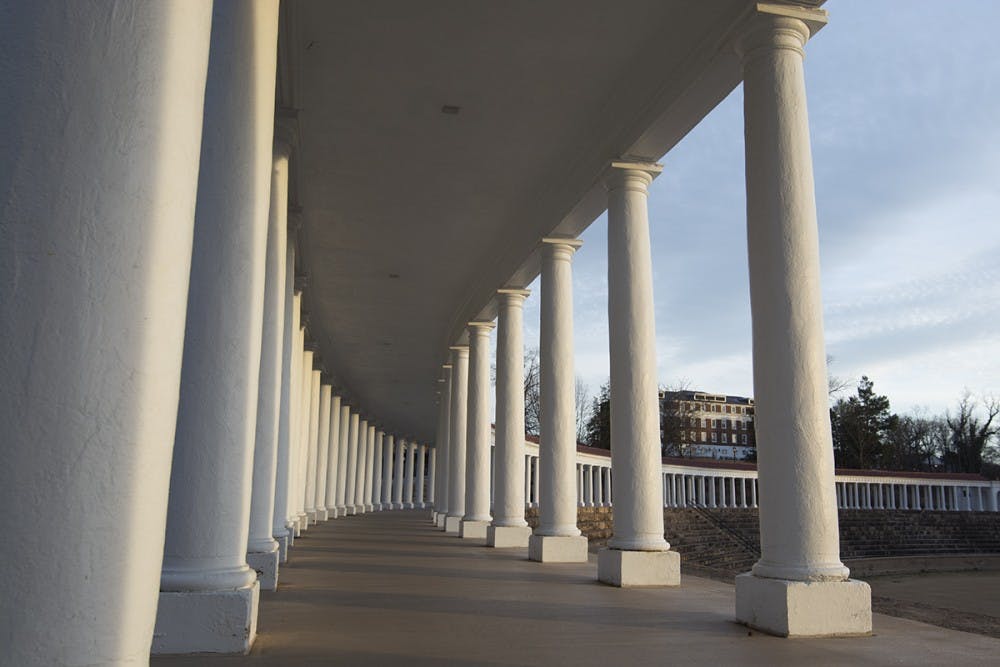The advocacy around the “Save Lambeth Field” initiative will be written into the story of the University. Although I will leave the official narrative to its organizers and participants, I wish to paint a picture of the events that led up to the Board of Visitors’ decision to remove Lambeth Field from consideration as a site for a new softball stadium. I believe that Lambeth’s modern day legacy should include catalyzing a change in the way that the University engages students in decision making.
On Nov. 29, a handful of residents from the Lambeth Field Apartments and other students representing Housing and Residence Life were invited to a listening session to give feedback on a proposal to build a softball stadium in Lambeth Field. During this session residents expressed disappointment that they had not been consulted earlier and criticized the proposal for failing to meet their own needs for recreation space and parking. On Dec. 7, 2017, the Board of Visitors heard the proposal and encouraged the University Architect to explore other sites in addition to the Lambeth site. In the weeks following, residents of Lambeth and the surrounding neighborhood circulated petitions, wrote articles for The Cavalier Daily and other local publications, printed buttons and painted Beta Bridge. As the student member of the Board of Visitors, my inbox was full of personalized letters asking the Board to intervene. I even had a petition personally delivered to my door. The advocacy demonstrated by the Save Lambeth Field initiative wasn’t just online. Residents and community members demanded action at three additional public engagement meetings hosted by the University in the week leading up to the Jan. 31 Buildings & Grounds Committee meeting. In these sessions, it became clear that Lambeth Field is more than a historical site; it is a deeply meaningful space for a our community.
Still, the outreach attempts were rocky. Meetings were held with little notice, students complained that they didn’t feel “heard” by the process and it was clear that the events were planned on the fly in response to student concerns. This example demands further action. The University must work to create robust student engagement protocols that can be deployed by its representatives. This is especially important during a presidential transition and even more important in a time when people feel alienated from powerful institutions.
To be clear, I think student self-governance is incredibly powerful — but only when it is supported by strong partnerships between students and professional staff members. Without established guidelines, many issues relevant to students fall through the cracks, are only communicated to a select few or go unidentified. I take responsibility for not participating in the public engagement around the Lambeth Field decision. I’ve spent a lot of time thinking about how I could have helped to improve the student engagement process in this situation. In my reflection I have returned again and again to a central belief; that civic engagement, whether it is taught in the classroom, through experience in a Contracted Independent Organization, or by a student-led campaign like “Save Lambeth Field,” is essential to a University education. Therefore, the University’s professional staff and student leaders should be supported by clear guidelines in their attempts to promote this value. With a better process in place, we can strengthen student self-governance, increase transparency and public trust and honor our values. Sounds like a win-win to me.
Because I think it is important to offer up some ideas, I’ve listed a few here.
- Create open opportunities for all students to participate by identifying key student stakeholders.
- Think outside of the traditional town hall format. Roundtables, design thinking and dialogue events are generally preferable.
- Maintain a list of attendees and communicate developments with them as the project progresses.
- Establish a strong relationship with student media sources like The Cavalier Daily and WUVA.
- Use videos and infographics where possible to communicate complicated ideas.
- Don’t be afraid to give detail. Students can handle it! This includes making the relevant documents available in advance of discussions.
- Plan for several rounds of engagement with different formats and venues.
While this list is by no means exhaustive, I believe it is a good starting point. What would your guidelines include?
Bryanna Miller is a fourth-year College student and the student member of the Board of Visitors.





